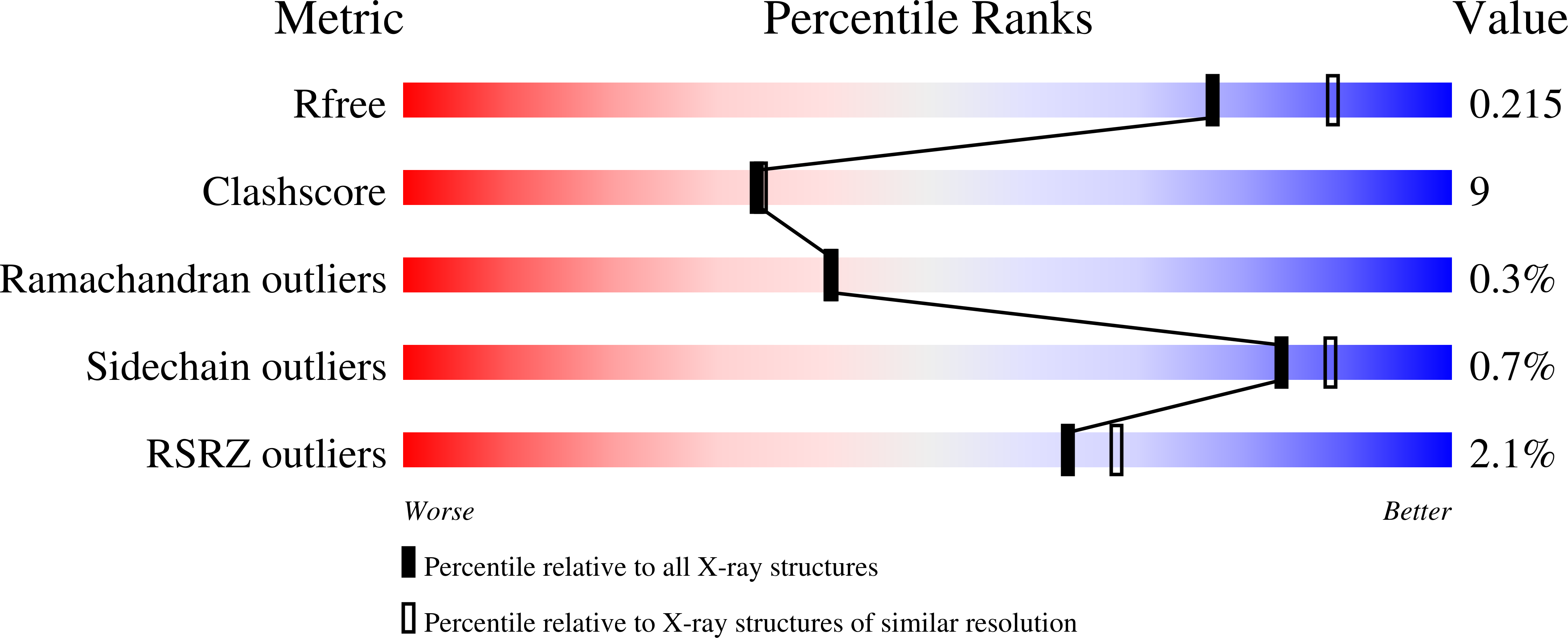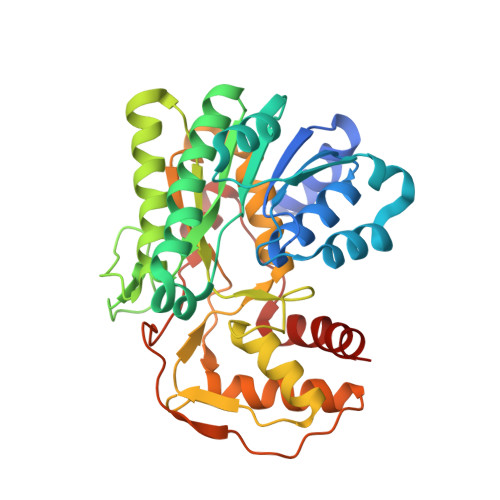Crystal Structure of WbpP, a Genuine UDP-N-acetylglucosamine 4-Epimerase from Pseudomonas aeruginosa: SUBSTRATE SPECIFICITY IN UDP-HEXOSE 4-EPIMERASES.
Ishiyama, N., Creuzenet, C., Lam, J.S., Berghuis, A.M.(2004) J Biol Chem 279: 22635-22642
- PubMed: 15016816
- DOI: https://doi.org/10.1074/jbc.M401642200
- Primary Citation of Related Structures:
1SB8, 1SB9 - PubMed Abstract:
The O antigen of lipopolysaccharide in Gram-negative bacteria plays a critical role in bacterium-host interactions, and for pathogenic bacteria it is a major virulence factor. In Pseudomonas aeruginosa serotype O6 one of the initial steps in O-antigen biosynthesis is catalyzed by a saccharide epimerase, WbpP. WbpP is a member of the UDP-hexose 4-epimerase family of enzymes and exists as a homo-dimer. This enzyme preferentially catalyzes the conversion between UDP-GlcNAc and UDPGalNAc above UDP-Glc and UDP-Gal, using NAD(+) as a cofactor. The crystal structures of WbpP in complex with cofactor and either UDP-Glc or UDP-GalNAc were determined at 2.5 and 2.1 A, respectively, which represents the first structural studies of a genuine UDP-GlcNAc 4-epimerase. These structures in combination with complementary mutagenesis studies suggest that the basis for the differential substrate specificity of WbpP is a consequence of the presence of a pliable solvent network in the active site. This information allows for a comprehensive analysis of the relationship between sequence and substrate specificity for UDP-hexose 4-epimerases and enables the formulation of consensus sequences that predict substrate specificity of UDP-hexose 4-epimerases yet to be biochemically characterized. Furthermore, the examination indicates that as little as one residue can dictate substrate specificity. Nonetheless, phylogenetic analysis suggests that this substrate specificity is an evolutionary and highly conserved property within UDP-hexose 4-epimerases.
Organizational Affiliation:
Department of Biochemistry, McGill University, Montreal, Quebec H3A 1A4, Canada.
















